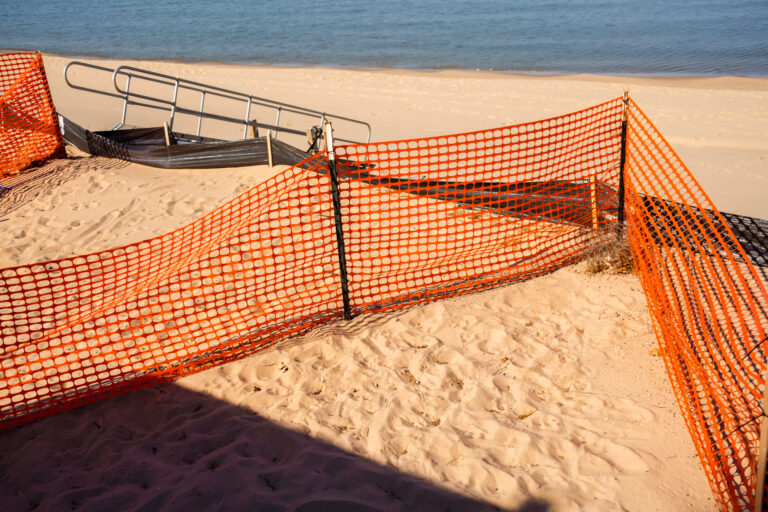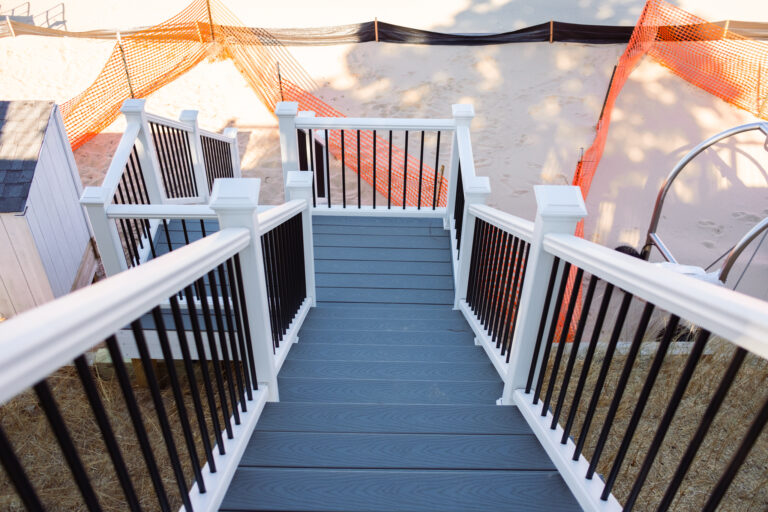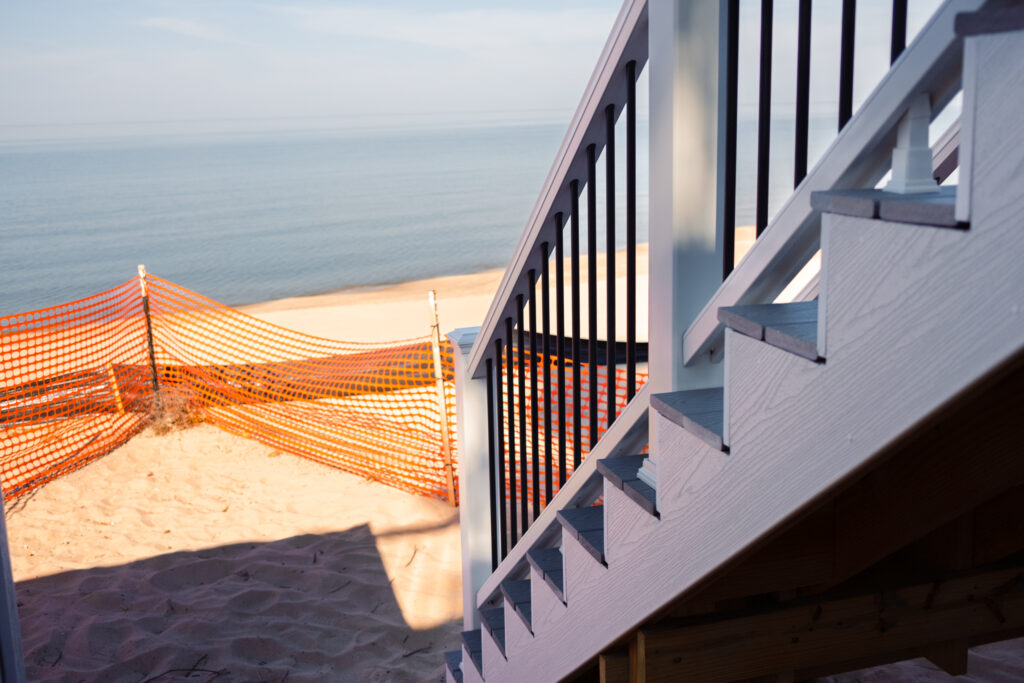Thanks to Lake Michigan, those who live along the coast in West Michigan are familiar with the heavy lake-effect snow and strong winds that come with the winter. These harsh conditions have been known to cause dangerous property and road conditions. Luckily, installing a snow fence is a simple and easy solution to help redirect snow drifts.
What is a Snow Fence?
A snow fence is a barrier that slows wind speed and collects snow, forcing it to accumulate in a certain area and preventing drifting. This often-overlooked landscaping solution works to protect your land, roads, vehicles, and more.
What are the Benefits of Snow Fencing?
A snow fence is a barrier that slows wind speed and collects snow, forcing it to accumulate in a certain area and preventing drifting. This often-overlooked landscaping solution works to protect your land, roads, vehicles, and more.
Collect sand—not just snow!
As high winds come across the lakefront, snow fences act as a temporary erosion control solution, capturing sand and building up dunes.
Reduce wind speed.
Snow fences act as windbreaks, slowing the strong winds and protecting your property from the harsh elements.
Collect snow into safely designated areas.
Snow fences are designed to create drifts along the fence line instead of along your roads, parking lots, or vehicles.
Portable and versatile.
Because they are easy to install and easy to move, snow fences are flexible—have them up during the winter and store them away in the shed during the summer.

How to Put Up a Snow Fence | Snow Fencing DIY
Installing snow fencing is easy enough to do on your own, but there are a few things to keep in mind.
When Is the Best Time to Install a Snow Fence?
The best time to install snow fencing is before the ground freezes and snow starts rolling in. In West Michigan, the ideal time is in the fall, up until about early-mid November.
How Far Away Do You Put a Snow Fence?
You should install your snow fence 65 feet away from the area you’d like to keep clear of snow. You don’t want to place your snow fence too far away from the area you are trying to protect, or the effect will be lost. But if you place it too close, snow will collect where you don’t want it to.
How Do You Position a Snow Fence?
Position your snow fence perpendicular to the wind direction and attach the plastic fencing on the upwind side of the posts, preventing tearing.
What Is the Best Material for a Snow Fence?
Vinyl, or plastic, is the best material to use for snow fencing because it is waterproof, easy to install, and easy to remove.
What Do You Need in Order to Install a Snow Fence?
- Fencing: Look for orange snow fencing or green snow fencing at your local hardware store. We recommend picking up anywhere from 50-100 feet, depending on how long you want your fence to run (Figure out your desired placement and dimensions before you make a purchase!).
- Posts: While you can use wood posts, we recommend using 7-foot steel t-posts with wood slats for additional strength against high winds. Plan on grabbing anywhere from 8-12 t-posts (depending on spacing) for 50 feet of plastic snow fence.
- A post driver: This tool will help you insert the t-posts securely into the ground.
- A 100-foot tape measure: This tool will come in handy when marking post locations and laying out fence lines.
- 10” plastic cable ties: You will want to grab enough to have around 3-4 ties per post.
- A good pair of gloves: While not crucial, we encourage you to protect your hands when taking on this project yourself.
How to Install a Snow Fence:
- Place the t-posts in a zigzag pattern about every 5-7 feet (you’ll want them to be closer for stronger winds).
- Drive the posts into the ground. We recommend inserting them about 1.5 feet deep. If the posts aren’t secure enough, heavy winds can easily pull them down.
- Place your fencing along the posts on the windward side. You will want to leave a gap of at least 5 inches below the fence.
- Tighten the fencing and secure it to the post with cable ties. We also recommend that the plastic fencing be sandwiched between the flat side of the steel posts and a 1” by 2” wood slat.

Snow Fence Installation Made Easy
Don’t want the hassle of putting up a snow fence yourself? With Lakeshore Customs, you won’t have to worry about a thing! We’ll evaluate your property to help you determine the most effective areas to install snow fencing. And once winter is over, we can come back, wrap up the fencing, and store it away on your property for you. Just send us a message or give us a call at (616) 994-2215 to get started!
Snow Fence Installation Near Me
We have the expertise and experience needed to properly install snow fences throughout West Michigan, not just along the lake. You can find our work near you in:
- Allegan, MI
- Benton Harbor, MI
- Fennville, MI
- Grand Haven, MI
- Grand Rapids, MI
- Hart, MI
- Holland, MI
- Kentwood, MI
- Manistee, MI
- Muskegon, MI
- Norton Shores, MI
- Pentwater, MI
- Rockford, MI
- Saugatuck, MI
- Shelby, MI
- South Haven, MI
- Walker, MI
- West Olive, MI

